4-hydroxybenzaldehyde
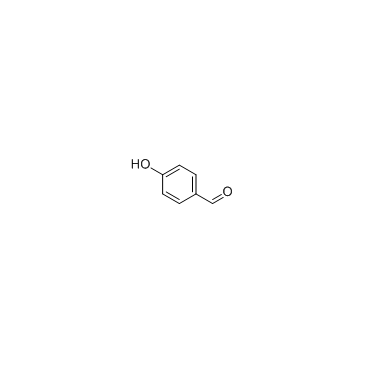
4-hydroxybenzaldehyde structure
|
Common Name | 4-hydroxybenzaldehyde | ||
|---|---|---|---|---|
| CAS Number | 123-08-0 | Molecular Weight | 122.121 | |
| Density | 1.2±0.1 g/cm3 | Boiling Point | 246.6±13.0 °C at 760 mmHg | |
| Molecular Formula | C7H6O2 | Melting Point | 112-116 °C(lit.) | |
| MSDS | Chinese USA | Flash Point | 101.3±12.4 °C | |
| Symbol |

GHS07 |
Signal Word | Warning | |
Use of 4-hydroxybenzaldehydep-Hydroxybenzaldehyde is a one of the major components in Dendrocalamus asper bamboo shoots, with antagonistic effect on GABAA receptor of the α1β2γ2S subtype at high concentrations. |
| Name | 4-hydroxybenzaldehyde |
|---|---|
| Synonym | More Synonyms |
| Description | p-Hydroxybenzaldehyde is a one of the major components in Dendrocalamus asper bamboo shoots, with antagonistic effect on GABAA receptor of the α1β2γ2S subtype at high concentrations. |
|---|---|
| Related Catalog | |
| Target |
Human Endogenous Metabolite |
| In Vitro | p-Hydroxybenzaldehyde (4-hydroxybenzaldehyde) is a one of the major components in Dendrocalamus asper bamboo shoots, with antagonistic effect on GABAA receptor of the α1β2γ2S subtype at high concentrations. p-Hydroxybenzaldehyde (101.7 μM) significantly reduces the GABA-induced chloride current of GABAA receptors expressed on Xenopus oocytes[1]. |
| References |
| Density | 1.2±0.1 g/cm3 |
|---|---|
| Boiling Point | 246.6±13.0 °C at 760 mmHg |
| Melting Point | 112-116 °C(lit.) |
| Molecular Formula | C7H6O2 |
| Molecular Weight | 122.121 |
| Flash Point | 101.3±12.4 °C |
| Exact Mass | 122.036781 |
| PSA | 37.30000 |
| LogP | 1.39 |
| Vapour Pressure | 0.0±0.5 mmHg at 25°C |
| Index of Refraction | 1.618 |
| InChIKey | RGHHSNMVTDWUBI-UHFFFAOYSA-N |
| SMILES | O=Cc1ccc(O)cc1 |
| Storage condition | Store at 2-8°C |
| Water Solubility | 13 g/L (30 ºC) |
CHEMICAL IDENTIFICATION
HEALTH HAZARD DATAACUTE TOXICITY DATA
MUTATION DATA
|
| Symbol |

GHS07 |
|---|---|
| Signal Word | Warning |
| Hazard Statements | H315-H319-H335 |
| Precautionary Statements | P261-P305 + P351 + P338 |
| Personal Protective Equipment | dust mask type N95 (US);Eyeshields;Gloves |
| Hazard Codes | Xi:Irritant |
| Risk Phrases | R36/37/38 |
| Safety Phrases | S26-S36-S24/25 |
| RIDADR | NONH for all modes of transport |
| WGK Germany | 2 |
| RTECS | CU6475000 |
| Packaging Group | I; II; III |
| HS Code | 2912210000 |
| Precursor 10 | |
|---|---|
| DownStream 10 | |
| HS Code | 2912499000 |
|---|---|
| Summary | 2912499000. other aldehyde-ethers, aldehyde-phenols and aldehydes with other oxygen function. VAT:17.0%. Tax rebate rate:9.0%. . MFN tariff:5.5%. General tariff:30.0% |
|
Effect of electron donating groups on polyphenol-based antioxidant dendrimers.
Biochimie 111 , 125-34, (2015) Numerous studies have reported the beneficial effects of antioxidants in human diseases. Among their biological effects, a majority of antioxidants scavenge reactive radicals in the body, thereby redu... |
|
|
Steam explosion distinctively enhances biomass enzymatic saccharification of cotton stalks by largely reducing cellulose polymerization degree in G. barbadense and G. hirsutum.
Bioresour. Technol. 181 , 224-30, (2015) In this study, steam explosion pretreatment was performed in cotton stalks, leading to 5-6 folds enhancements on biomass enzymatic saccharification distinctive in Gossypium barbadense and Gossypium hi... |
|
|
Convenient QSAR model for predicting the complexation of structurally diverse compounds with β-cyclodextrins
Bioorg. Med. Chem. 17 , 896-904, (2009) This paper reports a QSAR study for predicting the complexation of a large and heterogeneous variety of substances (233 organic compounds) with beta-cyclodextrins (beta-CDs). Several different theoret... |
| p-Hydroxybenzaldehyde |
| MFCD00006939 |
| 4-Hydroxy benzaldehyde |
| 4-Hydroxybenzaldehyde |
| EINECS 204-599-1 |
| Bisoprolol Impurity 15 |
 CAS#:123-11-5
CAS#:123-11-5![Methanediol,1-[4-(acetyloxy)phenyl]-, 1,1-diacetate Structure](https://image.chemsrc.com/caspic/236/7143-16-0.png) CAS#:7143-16-0
CAS#:7143-16-0 CAS#:699-06-9
CAS#:699-06-9 CAS#:176443-11-1
CAS#:176443-11-1 CAS#:57529-05-2
CAS#:57529-05-2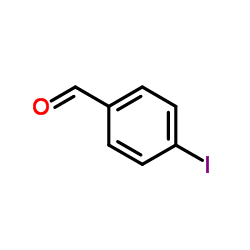 CAS#:15164-44-0
CAS#:15164-44-0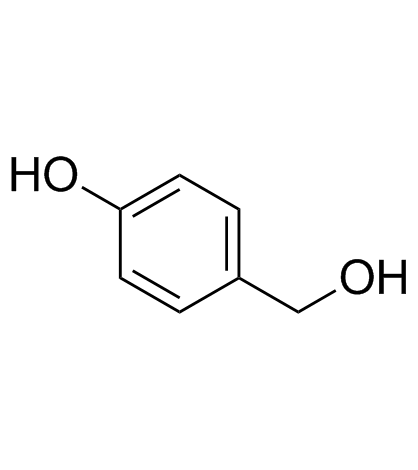 CAS#:623-05-2
CAS#:623-05-2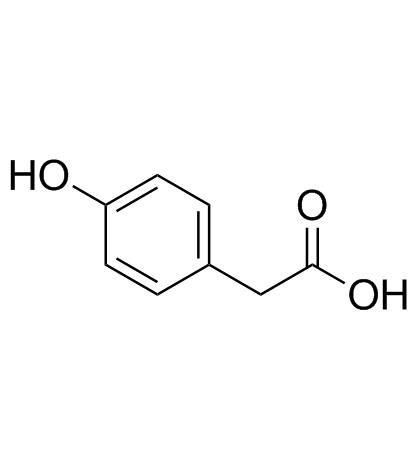 CAS#:156-38-7
CAS#:156-38-7 CAS#:40663-68-1
CAS#:40663-68-1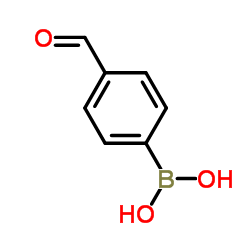 CAS#:87199-17-5
CAS#:87199-17-5![N-[(E)-1-(4-aminophenyl)ethylideneamino]-2-[4-[(Z)-(3-methyl-5-oxo-1H-pyrazol-4-ylidene)methyl]phenoxy]acetamide structure](https://image.chemsrc.com/caspic/472/107045-04-5.png) CAS#:107045-04-5
CAS#:107045-04-5![BENZOIC ACID, 2-[(4-FORMYLPHENOXY)METHYL]-, METHYL ESTER structure](https://image.chemsrc.com/caspic/405/1046494-85-2.png) CAS#:1046494-85-2
CAS#:1046494-85-2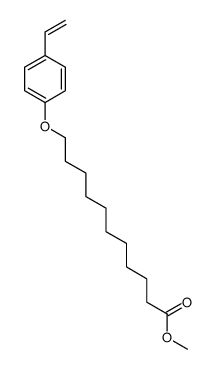 CAS#:109023-44-1
CAS#:109023-44-1 CAS#:105534-98-3
CAS#:105534-98-3![2-[4-[(Z)-(3-methyl-5-oxo-1H-pyrazol-4-ylidene)methyl]phenoxy]-N-[(3-n itrophenyl)methylideneamino]acetamide structure](https://image.chemsrc.com/caspic/435/107044-94-0.png) CAS#:107044-94-0
CAS#:107044-94-0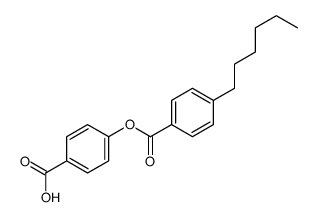 CAS#:111833-05-7
CAS#:111833-05-7![5-hydroxy-3-[(4-hydroxyphenyl)methylidene]-1-benzofuran-2-one structure](https://image.chemsrc.com/caspic/171/107680-50-2.png) CAS#:107680-50-2
CAS#:107680-50-2![5-Hydroxy-3-[(4-hydroxyphenyl)methylene]benzofuran-2(3H)-one structure](https://image.chemsrc.com/caspic/222/27439-06-1.png) CAS#:27439-06-1
CAS#:27439-06-1![2-[4-[(Z)-(3-methyl-5-oxo-1H-pyrazol-4-ylidene)methyl]phenoxy]-N-[(E)-1-phenylethylideneamino]acetamide structure](https://image.chemsrc.com/caspic/245/107044-99-5.png) CAS#:107044-99-5
CAS#:107044-99-5![N-[(E)-(3,4-dimethoxyphenyl)methylideneamino]-2-[4-[(Z)-(3-methyl-5-oxo-1H-pyrazol-4-ylidene)methyl]phenoxy]acetamide structure](https://image.chemsrc.com/caspic/321/107044-97-3.png) CAS#:107044-97-3
CAS#:107044-97-3
